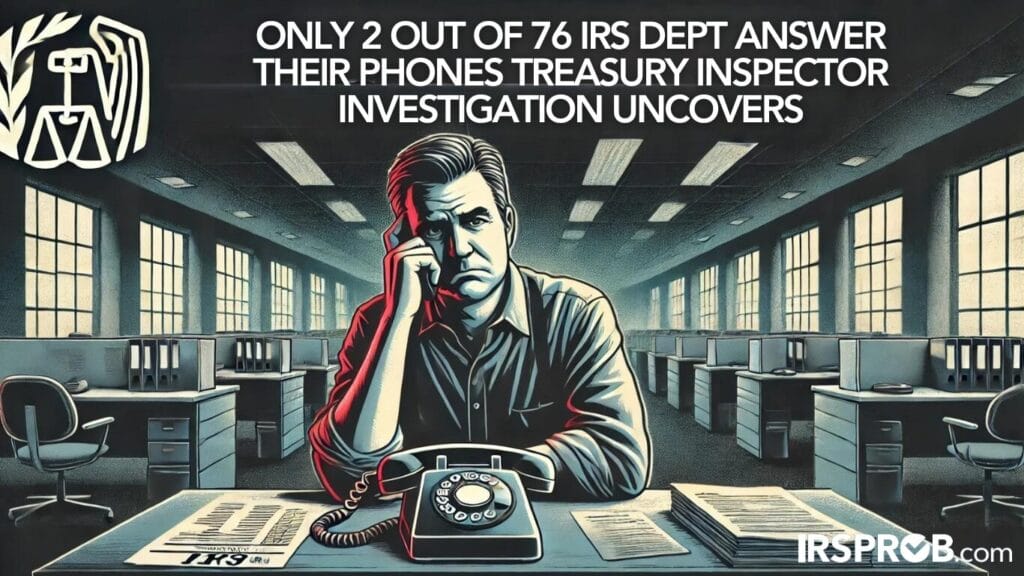
Taxpayer Advocate Service Fails to Provide Basic Services: A Deep Dive into TIGTA Findings
A tax practitioner, frustrated by a six-week wait for a Taxpayer Advocate Service (TAS) response about a tax refund, recently voiced their grievances to a federal watchdog. The complaint, which involved a client facing financial hardship, prompted a review revealing the slow and inconsistent phone service provided by TAS offices nationwide. This is a stark reminder of the TAS’s failure to deliver even the most basic services taxpayers need.
Overview of TIGTA Findings
The Treasury Inspector General for Tax Administration (TIGTA) conducted a thorough review of the phone lines to the 76 local TAS offices. The findings were alarming: some lines were not in service, others had full voicemail boxes, and many had inconsistent recorded messages and unclear callback timeframes.
TIGTA’s report highlighted the dire state of the TAS phone service:
- Only two offices answered calls.
- Fifty-six calls went straight to voicemail.
- Sixteen offices had full voicemail boxes.
- Two lines were completely out of service.
These outcomes echo the concerns raised by National Taxpayer Advocate Erin Collins in her January 2024 annual report to Congress and her midyear report in June. She criticized the IRS for using metrics that fail to accurately reflect the service callers receive. “Like the telephone service provided by the IRS, taxpayers who are attempting to contact local TAS offices will experience difficulties and frustration with their inability to timely obtain the assistance needed,” the TIGTA report stated.
One significant issue was the inconsistency in voicemail messages. The response times promised ranged from 24 hours to four weeks, a variability that leaves taxpayers in the lurch.
TIGTA Recommendations
In light of these findings, TIGTA made four key recommendations to TAS:
- 1. Monitor phone lines and respond to voicemails throughout the day.
- 2. Update voicemail message scripts for consistency.
- 3. Ensure the TAS and IRS websites provide consistent and accurate information.
- 4. Provide a reasonable wait time for returning taxpayer calls.
TAS’s response to these recommendations has been mixed. They acknowledged that local offices accounted for just 1% of TAS case receipts in the past year, implying a need to balance this issue against other priorities. However, TIGTA stressed that “expecting taxpayers to wait up to four weeks for assistance is a burden on taxpayers who want, or even need, in a case of financial hardship, to have their tax issues resolved quickly.”
Corrective Actions Taken by TAS
In response to the review, TAS has taken several corrective actions:
- Corrected phone numbers listed incorrectly on both the TAS and IRS websites.
- Trained workers on deleting voicemails after transcription and expanded voicemail capacity from 30 minutes to hours.
- Daily reviews of voicemails to quickly assist taxpayers facing economic hardship or other immediate issues.
- Updated recorded scripts on local office telephone lines for consistency.
- Aligned information on TAS and IRS websites for accuracy.
Conclusion
The findings from TIGTA’s review paint a troubling picture of the Taxpayer Advocate Service’s ability to provide even the most basic assistance. While some corrective measures have been implemented, the inconsistency and delays in service are unacceptable, especially for taxpayers in financial distress. As the watchdog continues to push for improvements, it’s crucial that the TAS prioritizes effective and timely communication to fulfill its mission of helping taxpayers navigate their issues with the IRS.
For more insights and updates on IRS services and taxpayer advocacy, visit [IRSProb.com](https://www.irsprob.com).








